Decorative plaster in the hallway: types, choices and finishes
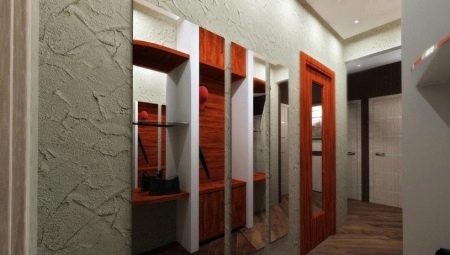
Plaster has a lot of advantages that allow it to be used in the interior of the hallway in combination with other materials. Noble texture, interesting decorative solutions, always unique design - these are just a small part of the reasons to take care of choosing just such a coating option. Decorating the walls in the interior of the hallway with textured and Venetian plaster does not take much time. You can do it yourself, observing the rules for applying the coating, and get an excellent result.
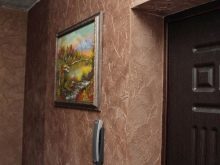
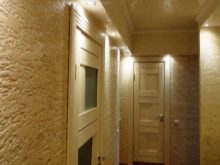

Peculiarities
Decorative plaster is a versatile material that can create the effect of silk, satin or marble, serve as a harmonious frame for the chosen decorative solution in an apartment or a country house. It is ideal for interior decoration in a corridor or a spacious hall; it is quite practical and is not afraid of temperature and humidity changes.
Decorative plaster is a budget-friendly way to create a beautiful and modern wall covering. There are options for compositions to imitate a tree eaten by a bark beetle, create a smooth coating or repeat the texture of a natural stone. Plastered walls retain their aesthetics and original color for a long time, they fit well even into a luxurious interior solution, they are harmoniously combined with natural stone or brickwork.
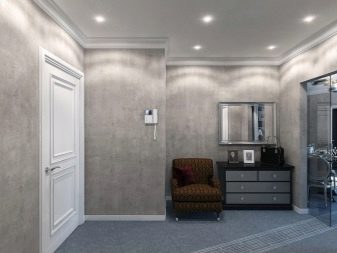

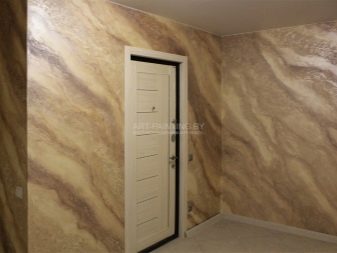
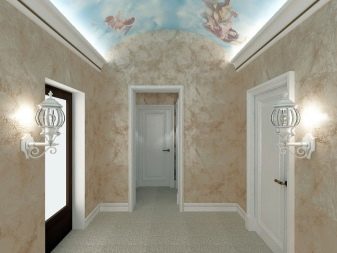
In the hallway, this coating provides additional thermal insulation, reduces the penetration of external noise from the staircase.In addition to the aesthetic appearance, decorative plaster in the corridor makes it possible to give the wall surface ideal smoothness or volume. A variety of compositions for creating original finishes allows you to choose the right option for a house or apartment.
The choice of colors usually depends on the style of the interior and the area of the room - in a small corridor it is better to avoid excessively dark shades.

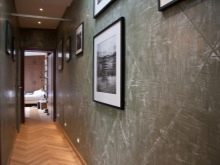
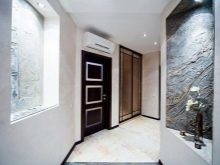
Decorative plaster is a dry mixture of components, which, when transferred to a liquid state, allows the creation of a thin-layer coating on the walls with excellent aesthetic characteristics. These are finishing compounds that require preliminary surface preparation. They form a strong and durable coating that can withstand significant mechanical and operational loads.
Seamless application and high adhesive characteristics allow using decorative plaster not only on concrete, brick walls of the corridor, but also on metal and wooden structures.

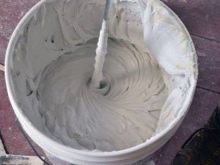
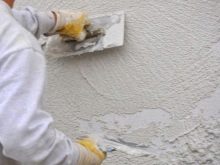
There are always certain components in the composition of such materials.
- Binders. In this capacity, both ordinary lime and synthetic materials can act - polyurethane, epoxy resin, acrylic. Their introduction makes it possible to ensure long-term preservation of the plasticity of the material.
- Fillers, giving various decorative characteristics. In this capacity are cotton and wood fibers, coloring pigments, stone dust. To enhance the decorative effect, marble or quartz chips, mica, silver and gold threads are used.
- Solvent... This can be water or non-aqueous products. If so, it is sold separately from the dry base.
All components are mixed immediately before preparing the composition for application to the wall surface.
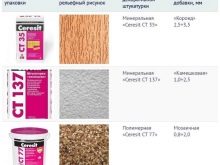
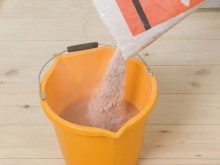
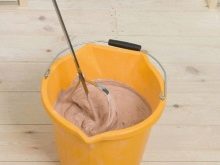
Varieties
Among the popular types of decorative plaster, materials stand out that make it possible to obtain a textured coating or imitating other types of finishes. The most relevant solutions include such options.
- Smooth finish. It can be made in any color, in texture it resembles a surface covered with wallpaper due to the perfectly smoothed texture. If you want to give the coating more volume, you can combine this coating option in the hallway with textured panels made of artificial stone.
Such a coating is much more practical than wallpaper, it can repeat the surface of silk or satin fabric, a perfectly smooth surface with an imitation of natural marble looks especially impressive.
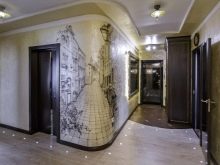

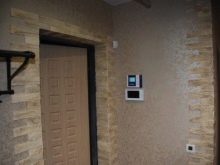
- Textured plaster. This type of decorative coating provides a true imitation of a rough stone surface. With the help of such compositions, you can artificially recreate the texture of various minerals and rocks. In the hallway, the calm, natural color scheme looks especially impressive. In addition, by choosing the right composition, you can decorate the walls under the skin of a crocodile or a snake.
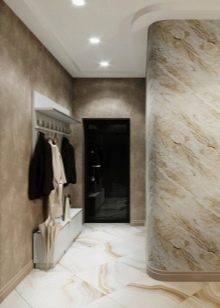
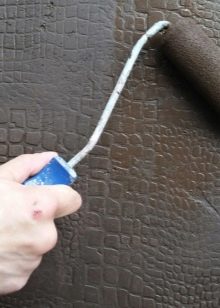
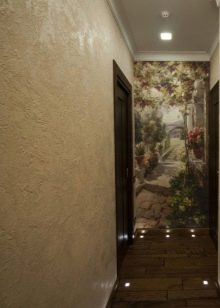
- Structural plaster. It contains particles of various structures and sizes. Due to this texture, you can easily create unique embossed coatings. For the decoration of the hallway, materials with a small size of fractions are selected.
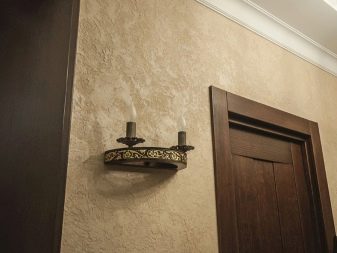
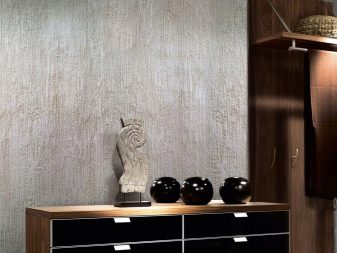
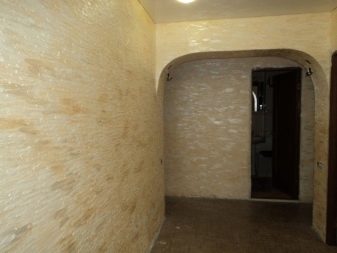
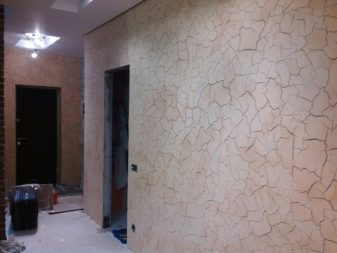
- Venetian plaster... It creates an interesting pattern on the wall surface and can look incredibly attractive when painted. Venetian plaster is one of the most beautiful. It contains marble or onyx dust with a slight shine, which, when applied in multiple layers, makes it possible to give the coating a special depth and decorative effect. After the completion of the work, the surface is protected with a special wax compound.
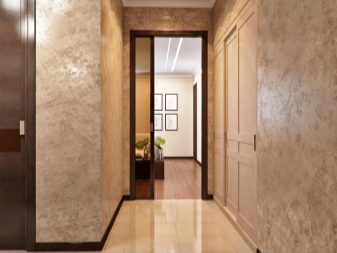
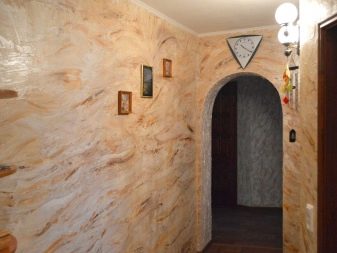
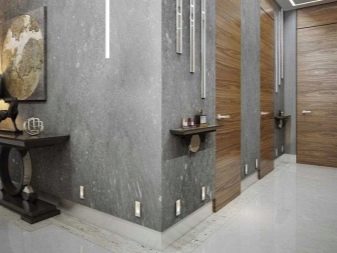

- Sgraffito... The material is applied in layers, in different colors, and then scratched to the desired depth, forming waves and stripes, forming a relief texture.There is also a variant of graffito that can imitate the coating of brick or masonry.
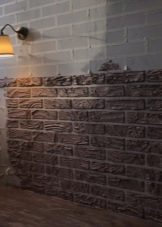

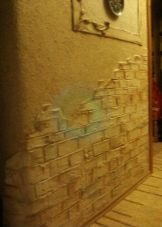
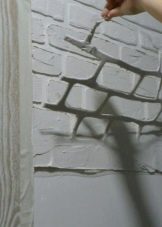
- Velvet plaster... The effect of the "velor" surface creates the presence of fine river sand in the plaster composition. The coating is translucent, delicate and especially weightless.

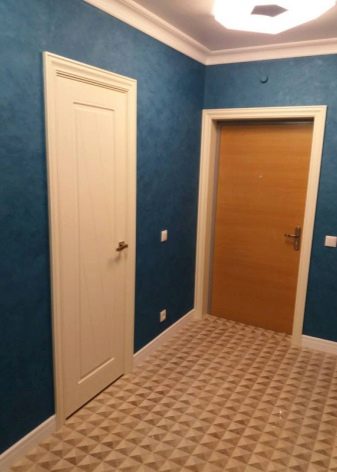
- Bark beetle. A rare option for a residential interior is quite suitable for a hallway. Such plaster is able to give the hallway a special comfort, it looks harmoniously in the setting of a country house or loft-style space.
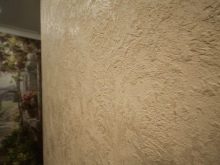

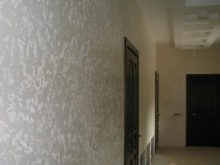
Color spectrum
Decorative plaster is characterized by a variety of colors. The finished tone can be obtained by coloring the white surface or by tinting the composition itself. Depending on the choice of technology with which the pigment is applied, different results can be obtained in the decoration of the room.
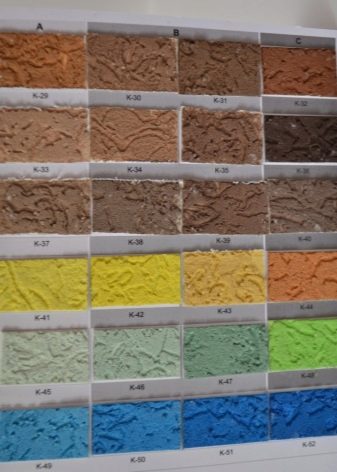
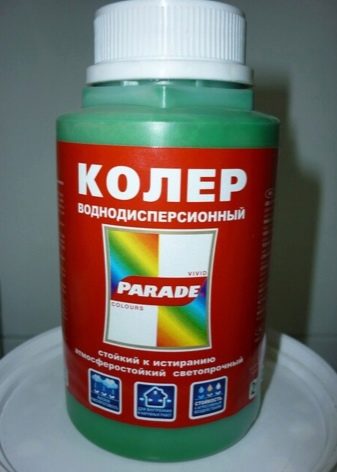
When tinting, the coloring paste is injected directly into the dry mix. The base is white or translucent plaster, which can be tinted in gold or silver. The rest of the pigments are selected from the huge database of available options if professional tinting is performed.
The mixture can be tinted by hand only in base colors.

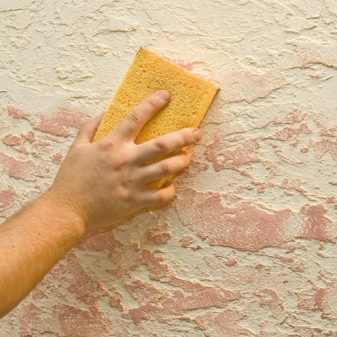
When painting, a special white plaster is used, which is first given the desired texture, then the pigment is applied with a roller or brush. The color palette is usually chosen based on the design style of the room:
- light pink, blue, milky colors are suitable for Provence;
- eco-style requires beige, brown, olive, straw colors;
- pastel colors are suitable for baroque, marble texture is acceptable;
- in the classics, white, silver, light cream are used;
- Art Nouveau requires the use of pure blue, green or coffee colors;
- minimalism is made out in black and white;
- the loft allows the inclusion of red, orange, brick, green shades;
- country music requires the selection of light sandy, pale yellow pigments for plaster.

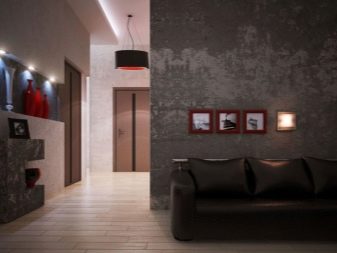
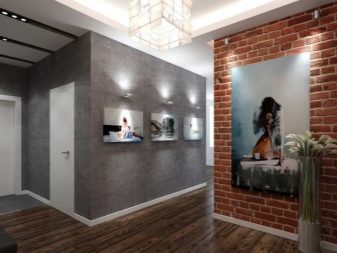
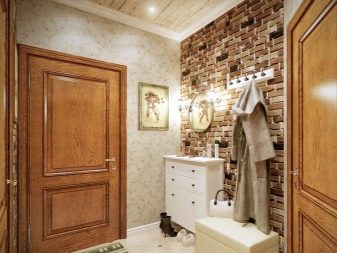
For wall decoration using decorative compounds, muted, neutral colors are used to avoid a visual reduction in the area of the hallway.

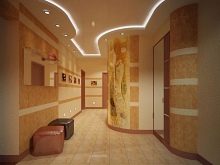
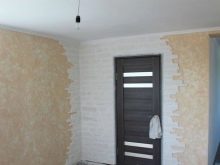
How to choose?
The choice of plastering compounds is always associated with the characteristics of the room and the operational requirements for the coating. For example, if you do not want to make long preparations, you should pay attention to acrylic mixtures that are completely ready for application. They mix easily with color pigments and dry quickly.
It is better to choose a mineral coating for a hallway, combined with a kitchen, it can withstand high humidity and is distinguished by its fire-resistant properties. Plasters of this type are notable for their affordable cost, they are made on a cement or lime base. Most of the decorative mixtures have just such a composition.


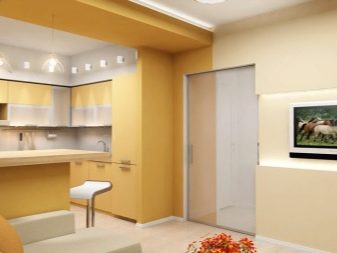
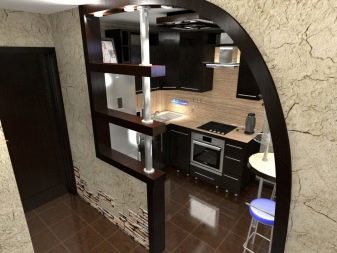
Suitable for the hallway and the use of silicate plaster, similar to liquid glass. It is worth paying attention to the fact that such formulations are not too environmentally friendly. They are sold completely ready-made and do not require additional mixing.
Expensive, but elastic and durable decorative plasters are obtained on a silicone basis. After the mixture dries, such a surface is breathable and environmentally friendly. The composition is easy to apply, dries quickly. But due to the high price, it is chosen for premium interiors.
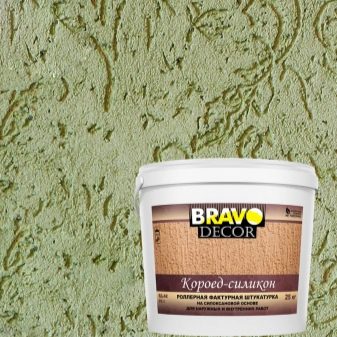

Application techniques
There are different options for applying decorative plaster to walls. You must first do the obligatory preparation of the surface of the walls. They should be even and smooth, with the elimination of excessive porosity, leveling of height differences. If the walls in the hallway are very uneven, it is imperative to use fiberglass reinforcement as a base, followed by applying a liquid putty and laying soil from 20 mm.
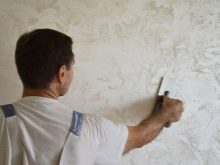
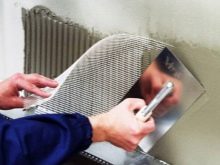
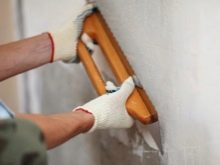
To create decorative plaster coatings, you need to prepare the necessary materials and tools in advance:
- construction metal spatulas;
- plastic trowel to create the effect of "bark beetle", "fur coat", steel - for Venetian plaster;
- paint rollers with pile and foam rubber replaceable nozzles;
- sandpaper;
- textured rollers for imitation of reptile skin, marble and other visual effects;
- stamps for the formation of interesting decorative textures;
- metal brushes for creating straight and arched stripes;
- hand brushes with a narrow head;
- color and wax for toning, coating protection.
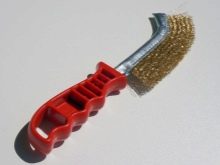


At home, to create the necessary decorative effects, you can use various devices - plastic washcloths, damp cloth or canvas, foam sponges, cords and ropes, fingers.
For all types of plaster, there are mandatory general application steps:
- using a trowel or steel float, the composition is applied to the wall;
- with movements from bottom to top, a full-fledged even coating is formed, movements with a float are performed at an angle of 60 degrees;
- when the applied solution becomes dry, you can start creating decorative effects.
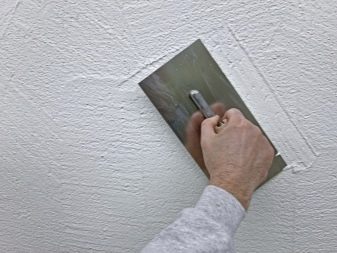
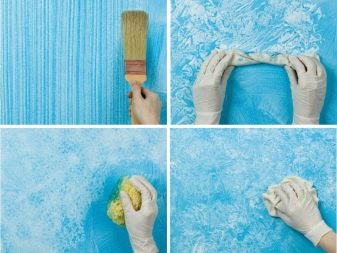
To create decorative plaster coatings of different types, special techniques are used. The differences in them are mainly in the technique, the direction of movement of the instrument. By following the exact guidelines, it is quite easy to get the desired result.
- For a rough, uniform texture the surface is treated with a trowel in a circle. The movements are short, keeping the direction to one side.
- To receive bark beetle effect horizontal, vertical, cross or circular movement of the tool is performed. This texture works well on sandy and limestone surfaces.
- "Fur coat" from plaster is created by spraying the material onto the wall of the hallway from the surface of the brush. You need a mesh base on a 1 × 1 m frame with a cell section of 10 mm. The finished "stencil" is applied to the primed wall, and the mixture is thrown over it.
- Boulders or masonry effect formed with a hard brush. The prepared primed surface is closed with a plastic layer of plaster of the desired color. The coating is leveled with a trowel. Holding the brush at an angle of 90 degrees to the wall, you need to trim - the harder the bristles, the more expressive the effect will be.
- Venetian plaster applied in thin translucent layers, in 12 steps, gradually forming a surface similar to natural stone. The material is thrown onto the wall and carefully smoothed with a spatula.
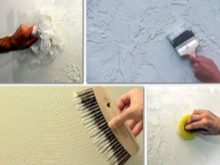
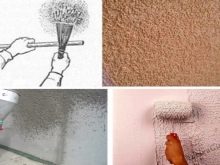
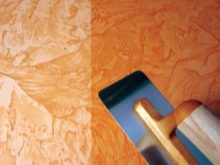
Successful examples in the interior
- Smooth decorative plaster in the interior of the hallway. The active color scheme is "calmed" by contrasting white trim details.
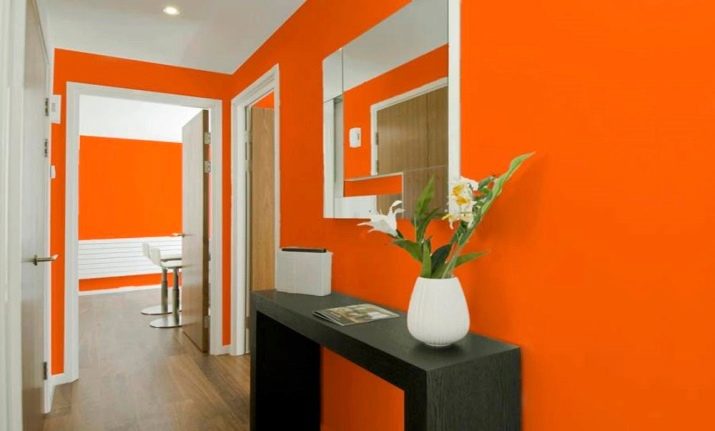
- An interesting solution for a hallway in a country house. Dark decorative plaster looks stylish and modern.
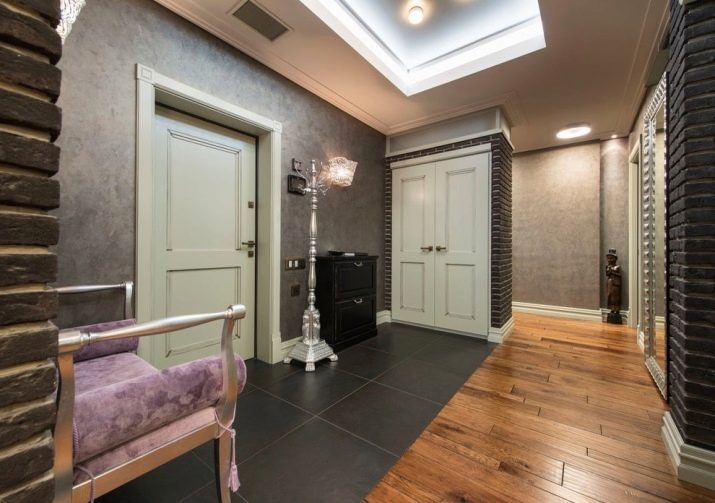
- Hallway design with textured plaster on the walls. The effect of rough masonry is in harmony with the fine relief of the wall covering.
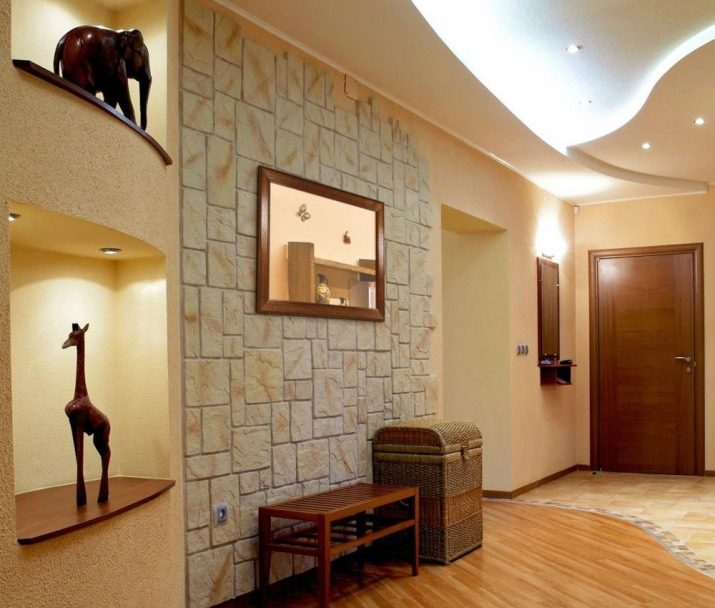
How to apply FEIDAL decorative plaster in the hallway, see the video below.








